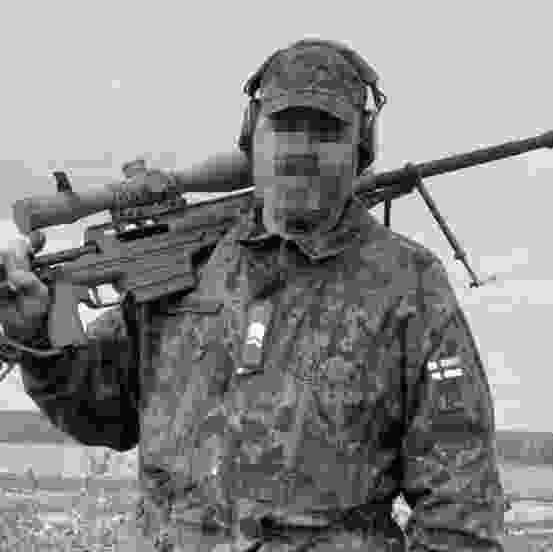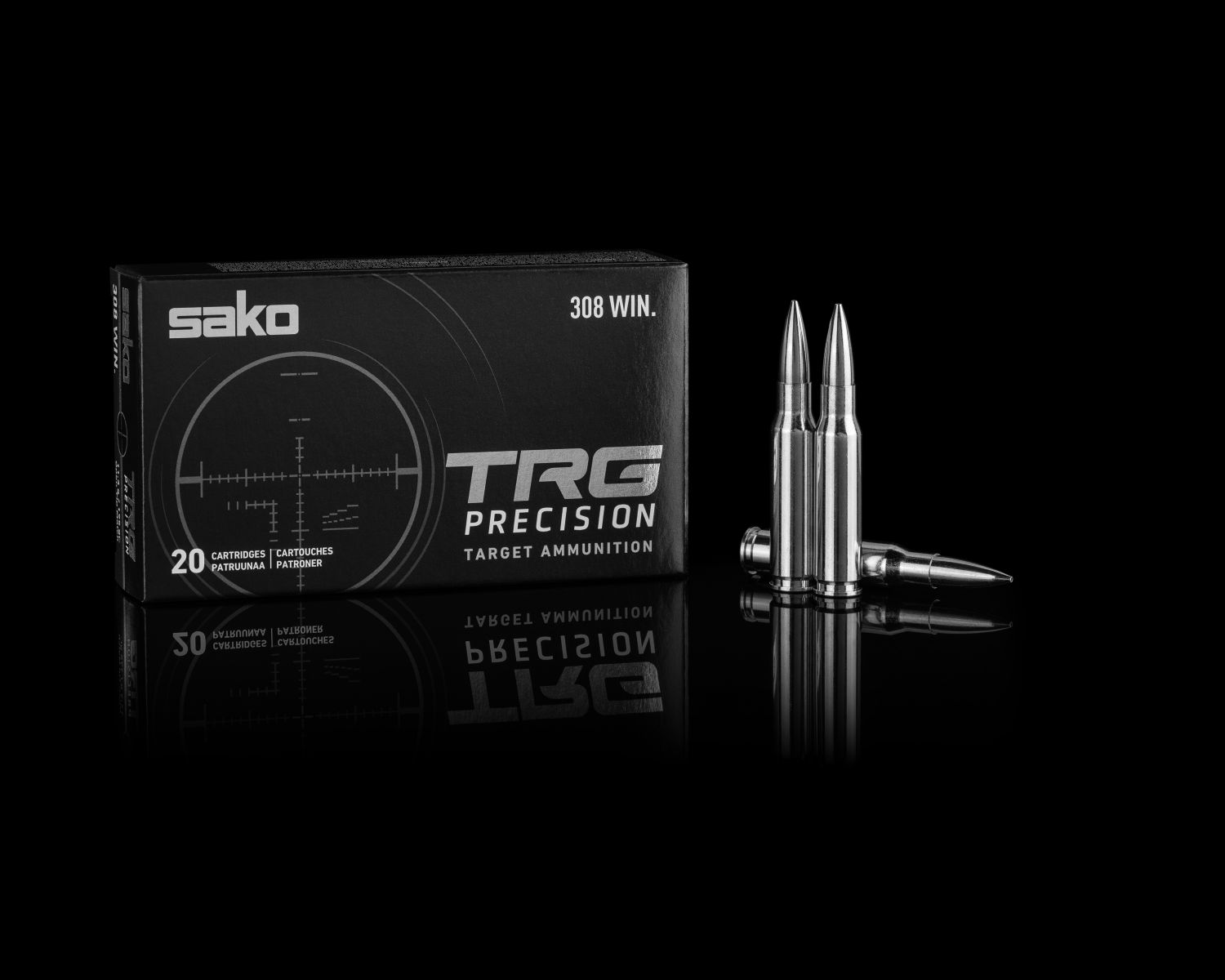
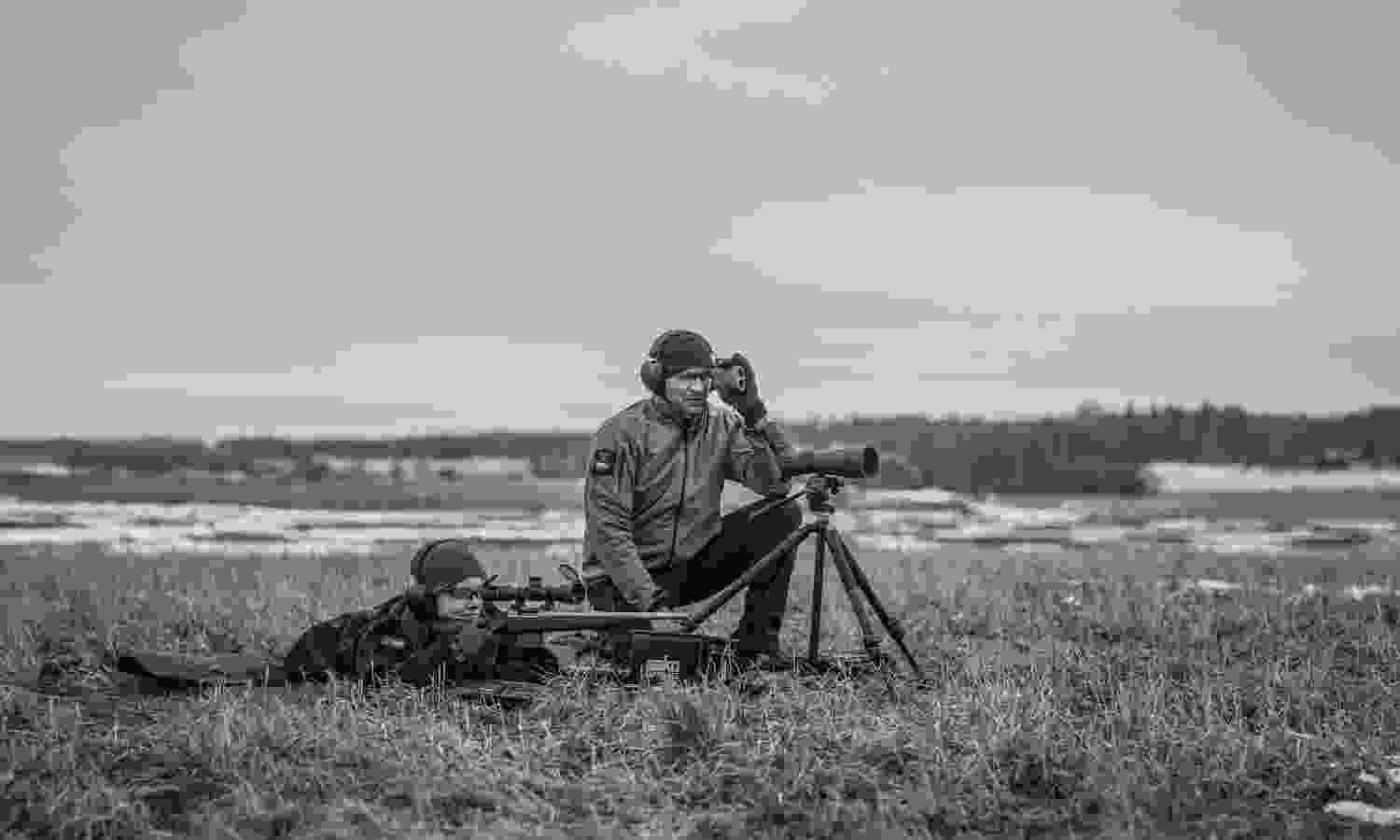
Long range shooting in extreme conditions
Long-range shooting has gained popularity thanks to advancements in technology. From more accurate rifles and optics to high-performance bullets and better measuring tools, the combination of these factors has made long-range shooting more accessible. Today, anyone with a smartphone can access free and precise ballistics apps, allowing them to calculate bullet drop and wind correction with ease no matter weather condition is.
Long-range shooting in particular has been steadily increasing in popularity. There are many reasons for popularity but, eventually, progress is very natural consequence of a combination of many individual reasons: more accurate weapons, better sighting optics, better performing bullets and cartridges, and better measuring instruments. However, the single most important reason is access to precise ballistic calculations and the ease of use of the available software.
Modern smartphones are capable of efficient computing, and there are countless free apps to choose from. Today anyone can turn their phone into a powerful and versatile field calculator, for free. In the best case, environmental weather correction is also done accurately and based on the automatically fetched data from the nearest weather station – the effect is then taken into account in bullet drop and wind correction.
Same goes with directly connected laser range finders, exact target distance is fetched automatically. These are crucial elements in extreme ranges and conditions- small thing being often very difference between hit and miss.
With gravity being the major deflecting force on a bullet, knowledge of the exact distance to the target is an absolute prerequisite for a hit. Performance of consumer-priced efficient laser range-finders has improved dramatically and especially over the last few years. At the time of writing, the best inexpensive range-finders can measure distances of 2,000–3,000m accurately and repeatably. Alternatively, even any smartphone can be used as a range-finder too: by using accurate aerial imagery and free mapping applications, user can often achieve an accuracy of 10-20m, even less than 5m as true GPS accuracy if target can be visited and its location saved in advance.
Who still remembers fixed 8x magnification, very limited sight adjustment and the PCB 1.0 program for MS-DOS operating system? Hitting 1,000m on the first shot was no walk in the park back then, even with the largest calibers.
In recent years, as progress has continued steadily. Community of long-range shooters has continued to expand, the terminology has evolved to better reflect current trends: "Long Range", "Extremely Long Range" and "Ultra Long Range" often appear in the context of precision shooting. Terminology has not been standardized as far as I know, but roughly describes the 1,000m, 2,000m and +3,000m shooting distances. Originating from the USA, the two-mile shoot has been a form of competition for years.
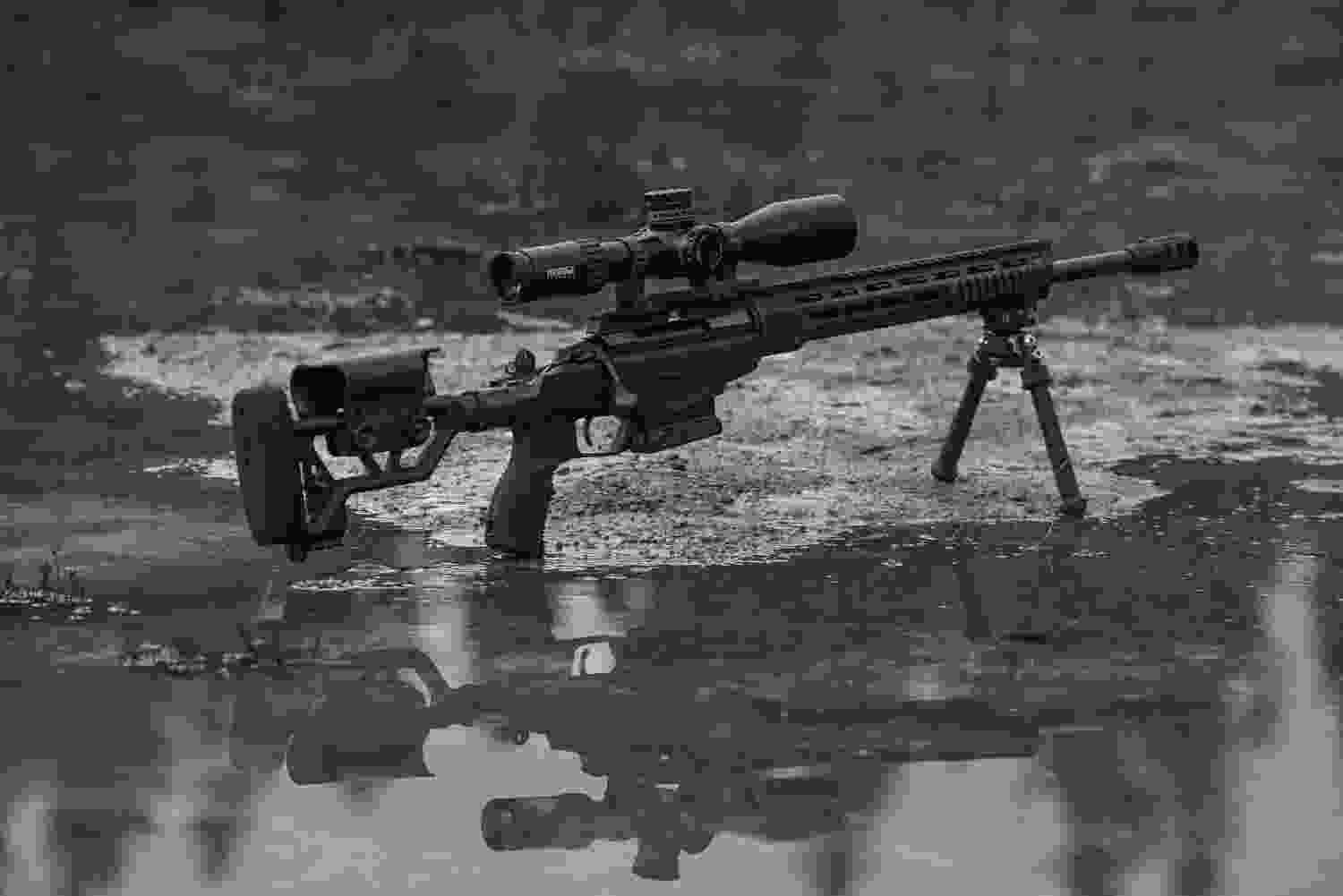
From a Finnish point of view, the introduction of the Sako TRG-42 rifle with the 338 Lapua Magnum cartridge was a milestone in the Finnish private / army reserve shooting community. Around the same time in the early 2000s, variable sights with 3–12x magnification and 30 mm tube diameters were typically used. The internal vertical adjustment range of the sights was often only enough for about 10 mrad, equaling shooting distance of just over 1,100 m with a Lapua Magnum rifle. The 3–12 and 4–16 sights quickly became available with the larger 34mm scope body tube, the typical range of adjustment in elevation increased to around 15–16 mrad and the maximum shooting distance stretched respectively to around 1,400–1,500 m. One big leap on the optics side was the PMII series 5–25x56 sight launched by S&B, which, in addition to increased magnification, increased the practical adjustment range to around 25 mrad. Thisroughly doubled commonly available scope adjustment travels and meant shooting distances of up to 2,000 m.
Ballistic calculation improvementsfollowed right after. Only few years later, Lapua was the first manufacturer to publish accurate doppler radar measured Cd (Coefficient of Drag) values for their bullets. Providers of ballistics software were quick to take advantage of this. "Ultimate" version of the German Brömel Quick Target ballistic software was able to use Cd values and calculated the correction (at that time) with amazing accuracy. I myself was present at an event where a TRG-42 gun and HPBT factory cartridge produced solid and repeatable torso-sized target hits at a range of 2,000m on the first or second shot. This was an amazing achievement at the time around 2005, so much so that many did not even believe it.
From 2010 onward and especially after 2015, long and sharp-tipped solid bullets with particularly low drag became available to a larger number of users at a more reasonable price through improved manufacturing techniques. These new bullets were combined with large powder capacity cartridges right away, resulting a supersonic flight range of up to and over 2,000 m- a ballistic performance that had been unimaginable in bolt-action rifle shooting only 10–15 years earlier.
At the moment, my personal distance record for target with a small number of shots is just over 4,000 m – about 12.5 s of bullet flight time – which is not a real upper limit. The rifle used was not a heavy purpose-built bench gun, but a rifle modified from a standard TRG M10 production weapon.
The inverse result of the ability to calculate ballistics over longer and longer shooting distances is that, over short distances of 500–1000 m, the practical accuracy of calculation has improved in a similar way. Even more, actually. The very first shot fired with a cold gun – in an unfamiliar location and weather – will hit a very small target, if the shooter knows how to use the freely available information and his equipment correctly. Virtually all bullet and cartridge manufacturers now provide an accurate bullet-specific ballistic "G7" value for their products. G7 standard is not as accurate as the radar-measured Cd value measured for each individual bullet type, but is considerably more accurate than the now almost forgotten G1 standard that was commonly used in the early 2000s. G7, as its simplest form, projects the trajectory of modern rifle bullets with good accuracy, usually well enough for very long ranges too. G7 value can be fed into any modern ballistic calculator app.
The app will solve corrected aiming point at the desired range, or the amount of correction to be set to the riflescope turrets. If all the input values are correct, calculated firing solution will always be true within a couple of clicks- to very long distances. There are, however, still few bumps along the way. Countless small things will affect impact point on extreme distances or situations. As one example, variation between individual bullet weight or geometry. If the diameter of the tip on a hollow-point bullet changes by 0.1 mm, isolated vertical effect on the point of impactis approximately 10 cm at a distance of 1,500 m. Practical effect of a very small individual variable is impossible to pinpoint reliably by shooting at a distance, but modern software that calculates the drag from bullet shape and weight are accurate enough to confirm the practical magnitude.
Summa Summarum: Although the modelling in modern calculation software is accurate itself and has been verified countless times, even the most advanced program still relies entirely on input data from the user. The "garbage in, garbage out" principle applies.
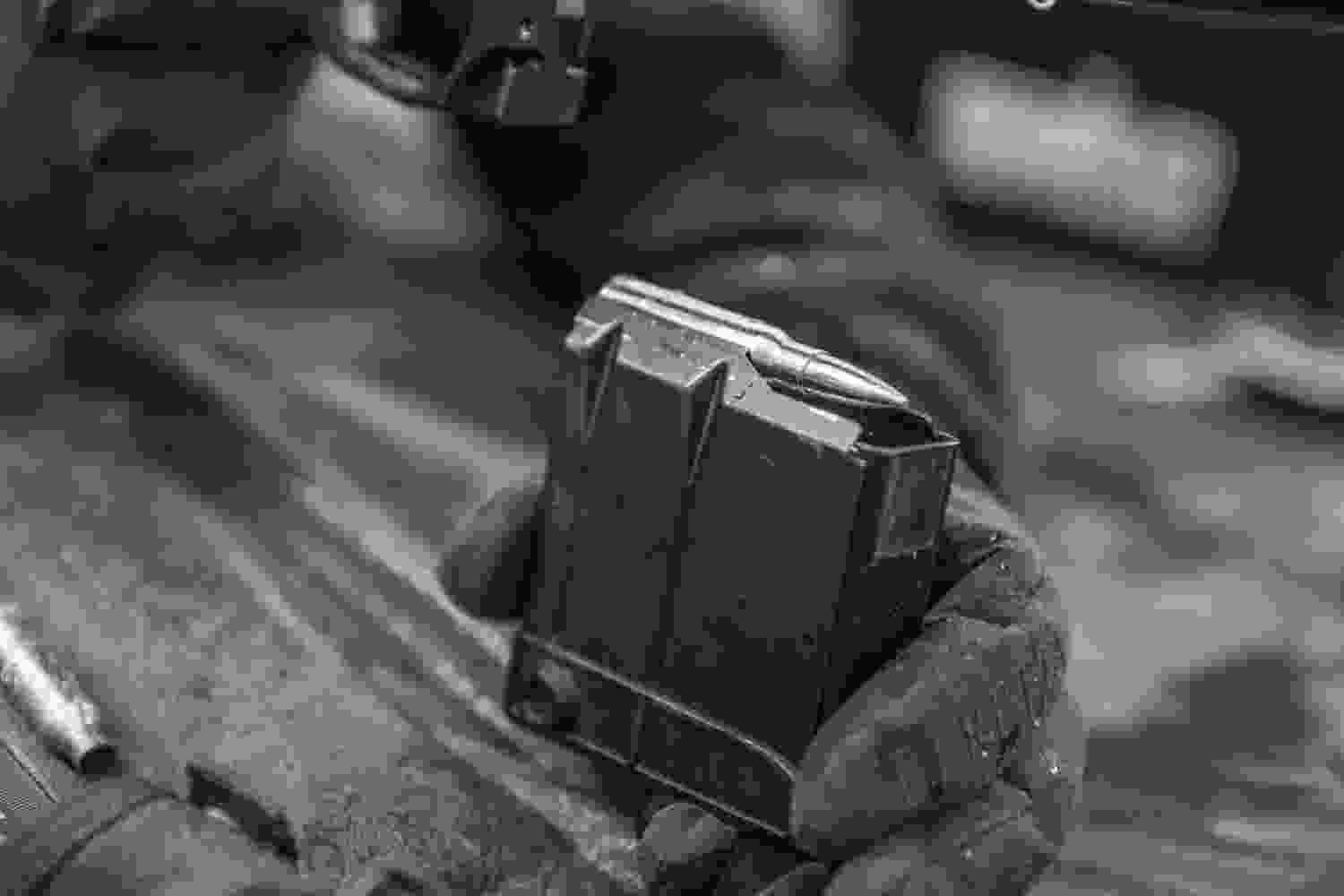
Gravity is the main force deflecting the flight of a bullet. Modelling the point of impact and needed correction requires accurate information on the true distance and bullet velocity, precise down to one meter and depending on the caliber and target distance. A faster bullet with lower dragallows significantly more ranging, wind or muzzle velocity variation error than a slow bullet with higher drag. Sometimes this error budget is called the ‘sweep area’ or “danger space”: it ismaximum allowed deviation error in bullet vertical point of impact while still hitting certain target size at certain distance. Faster bullet with lower drag is exposed shorter time to gravity and environmental interference before it reaches the target. If theactual bullet velocity is higher than the assumption used in the calculation, hits will be higher than firing solution suggest - even if all otherinput data is entered correctly. The bullet's muzzle velocity must therefore be known precisely and the used cartridge must have the smallest possible muzzle velocity variation: this deviation causes a direct vertical dispersion at the target.
Since the bullet that you use in your own gun is usually same, predominant variables for predicting the bullet drop are targetdistance and muzzle velocity. For long distances, air density (i.e. combination of air pressure, temperature and humidity) must be entered into the ballistic app. Rifle zero, thus long-range point of impact, can be affected by any change in the rifle. Or, change in ambient temperature which always has some effect on powder burn rate andbullet muzzle velocity too. Riflezero point can also drift and vary between warm and cold temperatures and by changed air humidity, especially with non-synthetic stocks. Summertime zero point of any rifle is usually not same compared to proper winter, especially if clothing and support are changed from T-shirt and sand bags on concrete table, thick winter jacket and prone bipod position. The gun and the shooter are always a dynamic entity – any change can affect to everything else. The only way to know is to try it systematically and make notes for later check.
The second biggest problem is wind. A prerequisite for a long-range hit on the first shot is correct assessment of the wind direction and magnitude on the flight path. In practice, it is impossible to measure distant wind without heavy and expensive equipment. Actual downrange wind estimation is entirely up to the experience and skills of the shooter. If looked closely enough, determining precise wind is very complicated:Over longer distances, the shape of the terrain effects on both wind directions and magnitude. Wind is always gusty; timing of shot must be chosen precisely and according to the pre-calculated wind correction.
Over long shooting distances, a bullet can encounter winds from completely opposite directions. Firing pointmay be a completely windless shelter but target area can be very windy same time. Even the bestanemometer is useless in such situation. During its long-range flight, the bullet trajectory also passes area of stronger winds, often at tree top level, wind at high altitude cannot be measured. In addition, the weighting of the wind correction changes in different ways, depending on whether the wind is strong at the start of the flight or at the end. The impact-shifting effect of a steady, same direction wind is always greater at the start of the trajectory than mid-point or end, because laterally displaced bullet error is angular, it keeps flying into same deflected direction.
Bullet cannot correct its deviated path; error and horizontal impact shift grows with increasing range. So, experience is everything with practical wind reading, even the best calculators will not replace a shooter's skill at judging the winds. While many ballistic apps allow user to adjust the wind in smaller discrete sections, the wind at a distance still needs to be reasoned from the movement of vegetation, the mirage behavior in warm air and other small clues.
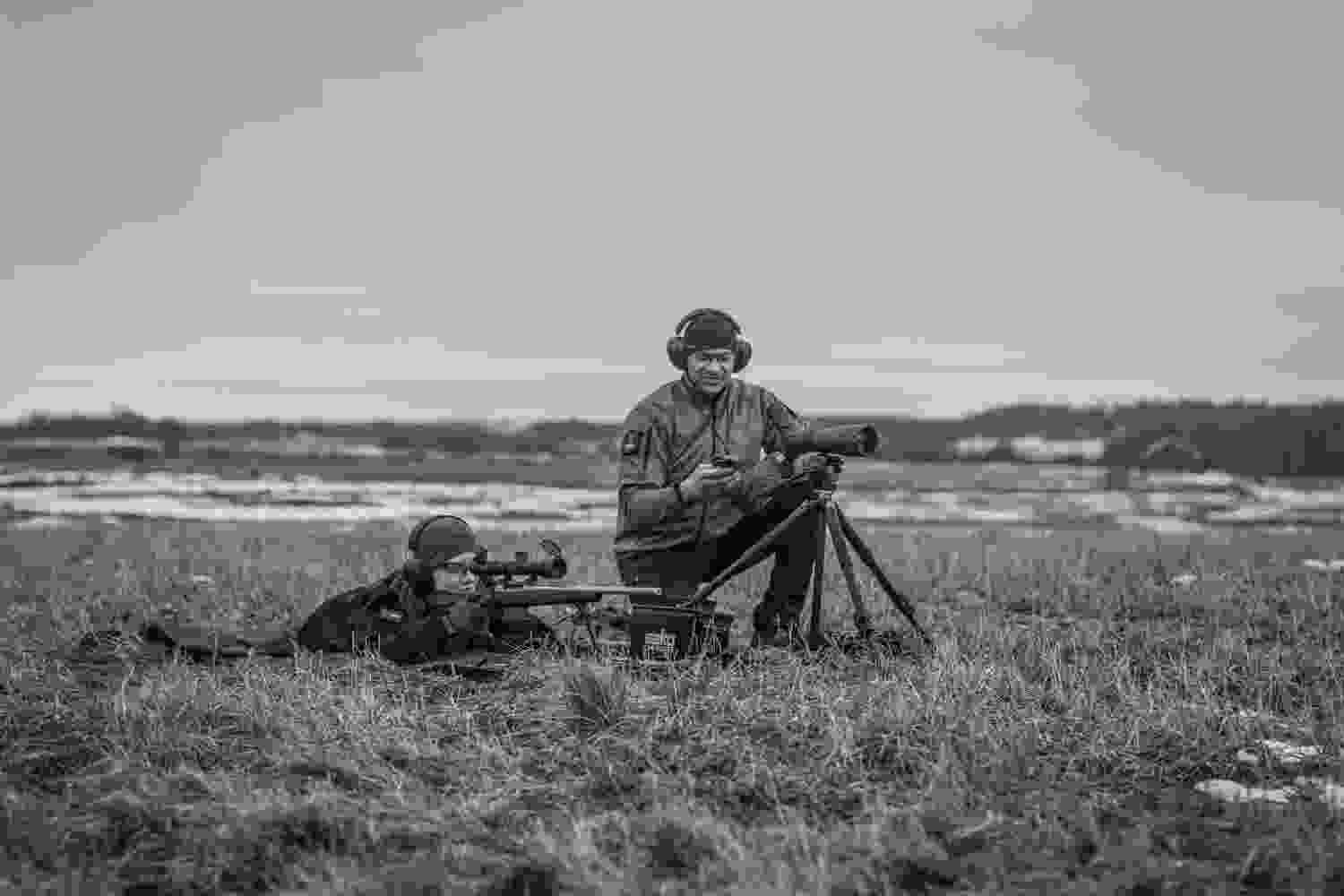
Many ballistic apps can calculate a correction for smaller and less known phenomena. Practical effect for all is much less than gravity or wind. But in long ranges, difference between hit and miss is often small too. Smallest effect can be relevant too, significant if they are combined.
In principle, all rifle and pistol bullets fly same way: The tip of the bullet pushes against the incoming air. The air exerts an active pressure force on the bullet, centered at approximately the rear of the bullet’s ogive area. Since the center of mass of the bullet is behind this point, the aerodynamic force tries to turn the bullet around to tail first position. The rapid bullet rotation caused by the rifling of the barrel, at roughly 200,000 revolutions per minute, generates sufficient gyroscopic force to keep the bullet in the desired flight attitude, tip first. A gyroscopically stable bullet behaves like a weather vane – but is pointing upwind instead of downwind. The rotational rate sufficient for the stable flight of a bullet depends on the bullet's mass, diameter, center of mass, center of aerodynamic forces and the geometry of its tail.
Fast rotation of the bullet also causes unwanted problems. Even a gyroscopically perfectly stable bullet will always wobble, or sway, by oscillating. Bit like a spinning and gently swaying gyroscope on a table. The motion is typically greatest after leaving the barrel, damping itself as the distance increases. Full stability is usually achieved at 100 m at the latest, but there are exceptions even among long-range rifles and well performing bullets. The frequency and amplitude of the oscillation depend on the bullet rotate rate, geometry and center of gravity. Gyroscopic sway is divided into two distinct components, the precession and the smaller nutation that occurs within it. In some situations, the spiral flight caused by the precession of an unstable or marginally stable tracerbullet can even be seen with bare eye.
However, a stable bullet always flies towards the target in the right attitude, but never precisely tip first. Today's radar measurements have also made possible to detect differences in the flight behavior of bullets that are considered to be perfectly stable. A slightly over-stable bullet may have lower drag than one that is normally stabilized. A bullet that flies more stable, is aerodynamically better. In traditional thinking, a bullet that is over-stable and spinned at too high rate will shift from tip first to a "belly first" gliding flight attitude at the end of the trajectory – but this is not necessarily the case. In 2018, physicist and bullet designer James A Boatright patented the principle of "hyperstabilization", which approximately doubles the bullet's spin rate over the conventional stability safety factor. This reduces (especially) the initial flight “wobble” of the bullet, and thus improves its accuracy and average drag. Neither lost accuracy or velocity in the very beginning of the bullet's free flight cannot be regained.
Of the more familiar phenomena related to stabilization and bullet flight attitude, wind also affects horizontal flight path of the bullet due to changed flight position. This happens due to changed bullet yaw angle relatively to incoming air, not because the wind blows the side of the bullet and simply pushes it horizontally: Just like a upwind pointing weather vane, the tip of a gyroscopically stabilized bullet points slightly into the oncoming wind, averaging its position against direct airstream and offset sidewind it pushes against. The increased surface area and causesasymmetric drag. Slightly more exposed front part of the bullet meeting incoming air stream – the opposite side to the sidewind – pulls the bullet sideways with the wind. If the wind is from right to left, the tip of the bullet will point slightly to the right. The drag on the left side of the tip is therefore greater, and this causes the bullet to drift to the left with wind direction. It might be bit difficult to grasp, but drag is a force that is acting opposite to thrust- it pulls.
Much the same principle applies to a sledge speeding downhill. With left hand acting as a brake against the ground, the sledge will steer to the left. However, unlike the sledge, gyroscopic forces of a bullet maintain its attitude. Bullet does not turn away from the wind - but horizontal drag force causing drift still remains. The wind direction changes also cause slight variation in the vertical impact point of the bullet, but this is rather small effect and is not usually taken into account.
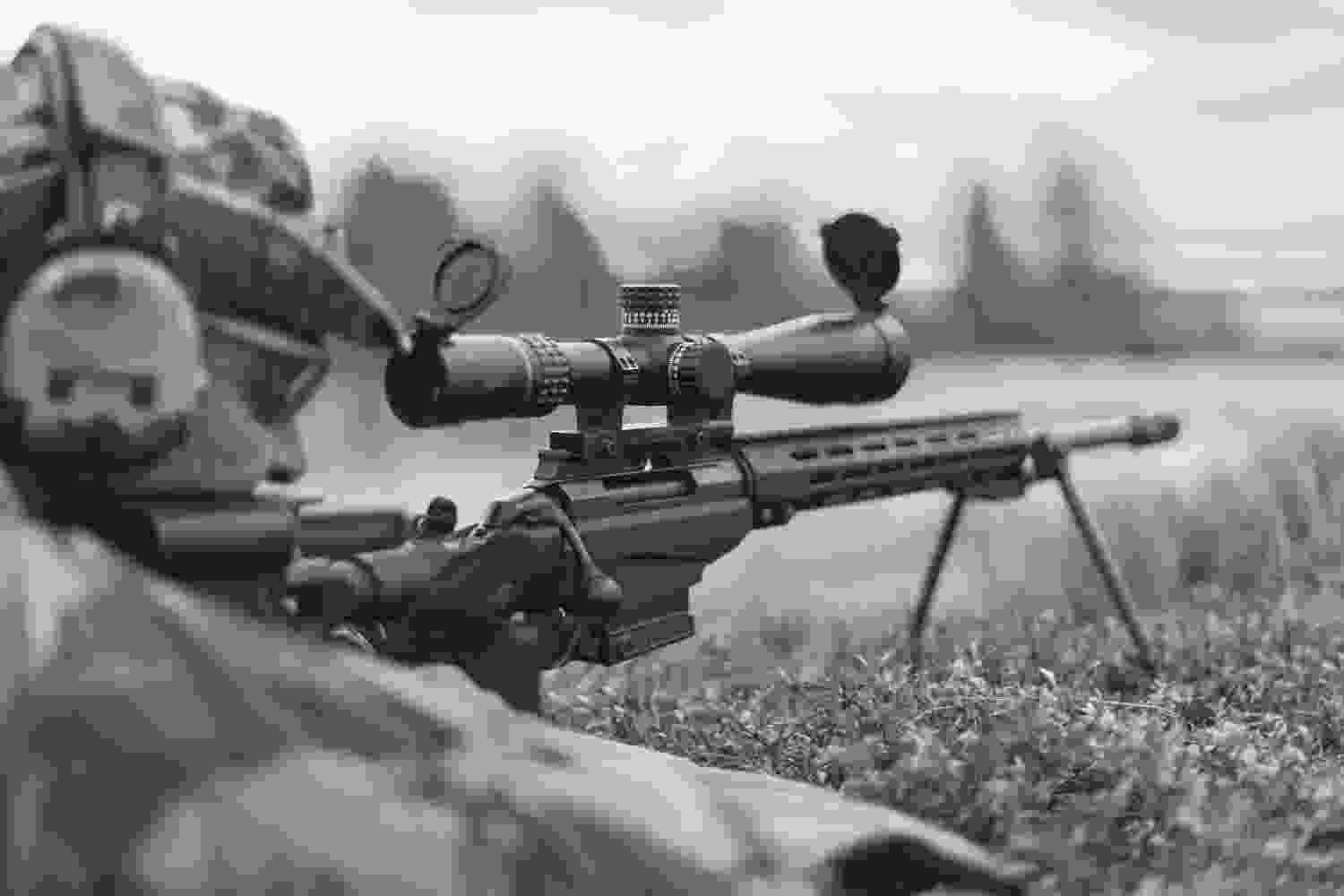
The rapid rotation rate causes a constant gyroscopic force on the bullet, and causes constant horizontal shift called gyroscopic spin drift, or “spin drift” in short. Drift, a combination of gyroscopic forces and aerodynamics, is separate phenomenon and is not depending about wind. The bullet always drifts horizontally to the direction of its rotation, usually to right. Correction is always taken into account in long-range shooting, by adding or subtracting its effect to total horizontal correction. Calculating the exact drift is extremely complex, but formulas approximating it in commonly used software compensate it well.
Many variables are involved resulting total spin drift shift: shooting angle, geometry and weight of the bullet, dynamic and gyroscopic stability of the bullet, weather, the time of flight, etc. Effect of spin drift deviation is not practically verifiable over short distances, but at longer distances it is clear, well-known and corrected with good or very good accuracy. With a typical 308 Winchester rifle, isolated spin drift correction required for a 1,000 m range is roughly 2–3 sight clicks, 20 - 30 cm horizontally.
The Magnus effect, which results from the rotation of a flying object in the air, is a phenomenon whose principle has been known for a long time. Effect is rather small, and is typically not taken into account as a separately calculated correction in ballistic applications. As a phenomenon related to ballistics history, there are historical references to artillerymen from the 17th century. Even the basics of ballistics were not understood back then- but it was still known that by taking into account slightly asymmetrical cannonball orientation when loading it in the cannon, it was possible to increase maximum firing range. The reason for this was probably not understood at the time at all- but with the cannonball center of mass in certain position at the moment of ignition of the gunpowder, ball rotated backwards in the longitudinal direction against the air – just like a tennis ball when hitting backspin. Slight benefit on effective range was understood and exploited too.
In rifle shooting, and especially at practical shooting distances, the effect of the phenomenon is very small. Unlike a cannonball or tennis ball, the bullet does not spin longitudinally against a fast-incoming air flow. Barrel's rifling rotates the bullet transversely, rotational velocity bullet encounters is against crosswind, not headwind against much faster airstream.
The resulting effect with rifle bullets is small but still exists. It can still be seen because the bullet is spinning with very fast rate– usually clockwise when viewed from behind the gun. Bullets surface friction and rifling grooves move the air molecules on the bullet's surface in the direction of its rotation, bit like a paddle wheel. Air removed from the one side of the bullet, “paddled” to opposite side is enough to create a small pressure difference on the opposite sides of the bullet, creating vertical force with direction depending from incoming wind direction. This will effect slightly on bullets vertical point of impact. Example: Clockwise-rotating bullet, shot with right-hand twist, flies against left-to-right downrange wind. Local pressure around bullet will be slightly higher on the underside of the bullet, because of bullets rotational direction and point where rotation is countering incoming wind. Respectively, with the downrange wind from right to left, the relative pressure above the bullet is slightly higher than below- Magnus force direction is downwards lowering impact point. There is very little small-arms related research data available on the subject, but same pressure differential may also affect the trajectory through a slight change in bullet flight attitude and stability. As Magnus force center is not a force acting in same point with bullets mass center, it is fundamentally a small destabilizing factor. In any case, the effect of the phenomenon is very small from practical field shooting perspective.
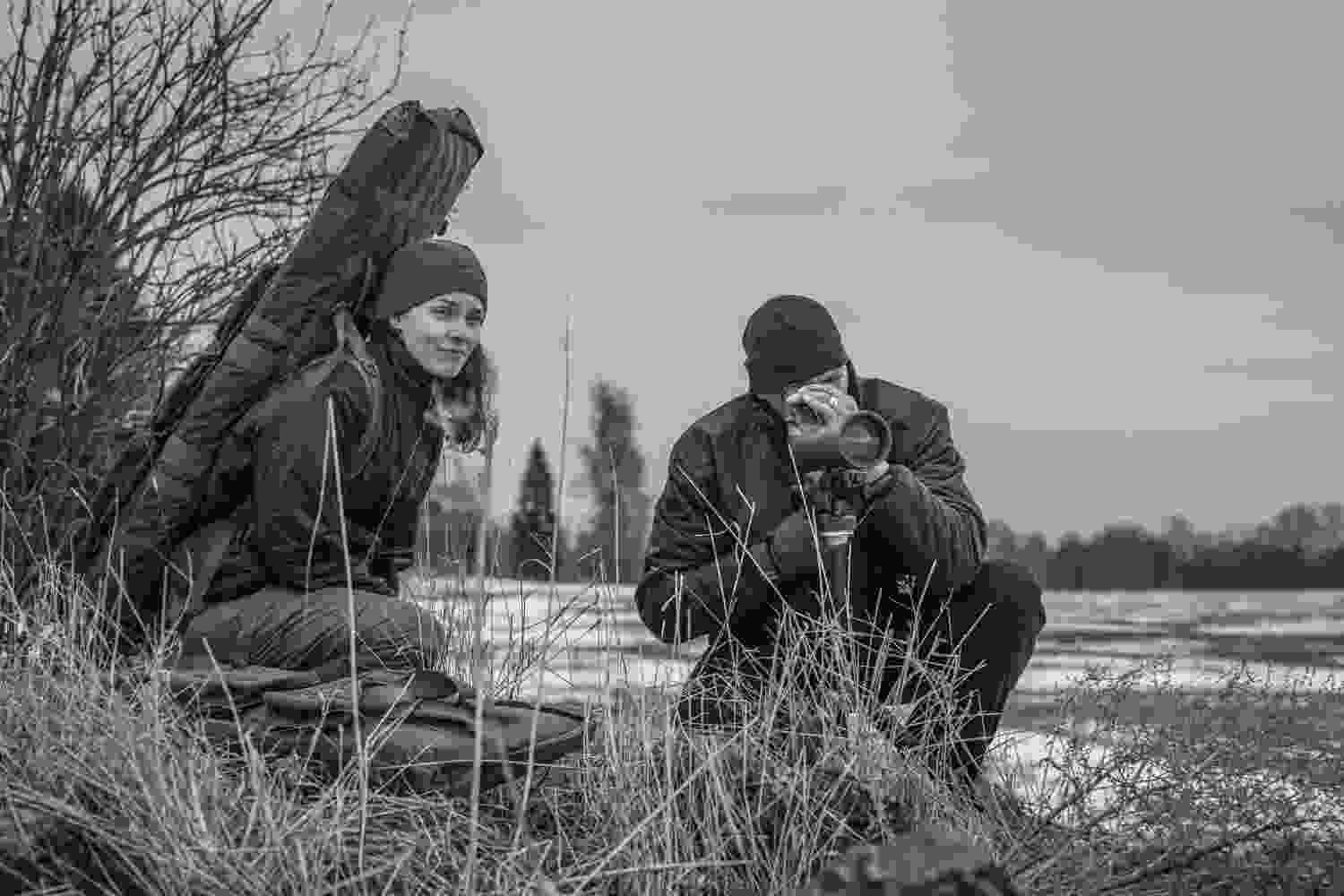
The aerodynamic jump of a bullet is a phenomenon that has been known for decades and has studied in detail at least since 1980’s. When the bullet exits from the muzzle, and, within the first couple of meters of its free flight, force acting on the transverse direction of the bullet flight path can cause a directional deflection in the bullet's trajectory. Random radial “sway” of a bullet nose near the muzzle before dampening out downrange is normal and very typical with all bullet types and rifles, but an additional force may cause extra ‘dip’ of bullet nose in certain situations. Bullet exiting barrel is particularly vulnerable to additional disturbances as it leaves the bore, any interference may cause a momentary and unexpected change in flight attitude. Problem causing the occasional “dip” may happen for several reasons: it can be defect in the barrel crowning, bad muzzle brake, a silencer alignment or crosswind at the shooting point.
The exact chain of events is complex, but the simplified way of looking at it is as follows: Bullet is a gyroscopically stabilized rotating object. Horizontal force such as a crosswind- or vertical wind as helicopter rotor downwash, acts on the bullet at a 90-degree angle and through its aerodynamic pressure center at the front. The bullet orientation is thus turned by a force relative to its more rearward center of mass, turning the tip of the bullet vertically or horizontally. Depending on the direction of a force (sidewind), the bullet may therefore momentarily deviate up or down from its straight barrel line attitude. This momentary and additional change in pitch or yaw attitude causes an aerodynamic ‘jump’. It can be to up, down, left or right- usually up or down as incoming wind is almost always horizontal. If the deflecting force were affecting from 90 degrees different direction, for example due to a machining problem in the barrel crowning, the bullet would jump sideways. In special situations like with helicopter, strong winds can also be vertical. In this case, the deflecting effect of the sidewind vertical jump would be reversed and the trajectory deviation would be to lateral direction. Deflection direction being to 90 degrees different direction with incoming interference may sound odd, but gyroscopic precession is causing force direction change from the point where it was applied.
Increasing the gyroscopic stability (Sg) of the bullet – that is in fact, having a setup with need to tighter twist on barrel – makes the bullet more prone to jump. In another words, the tighter the twist bullet needs due to its increased natural instability, the more sensitive it is also to “jump” effect. Aerodynamic jump is always linear and, unlike wind deflection, does not grow with distance: Jump requiring one click correction on the sight at 500 m increases linearly to two clicks at 1,000 m. Some ballistic calculators estimate and compensate jump error, but it is still difficult to isolate and see in practical shooting tests. In typical field conditions, other variables are much larger magnitude. Effect of the ‘jump’ is hidden. In terms of magnitude and looked separately, vertical jump caused by horizontal wind can be roughly 10–20cm at 1,000m distance. Vertical direction impact shift is therefore same magnitude with about 0.5m/s deviation in muzzle velocity, calculated with a typical 308 Winchester caliber
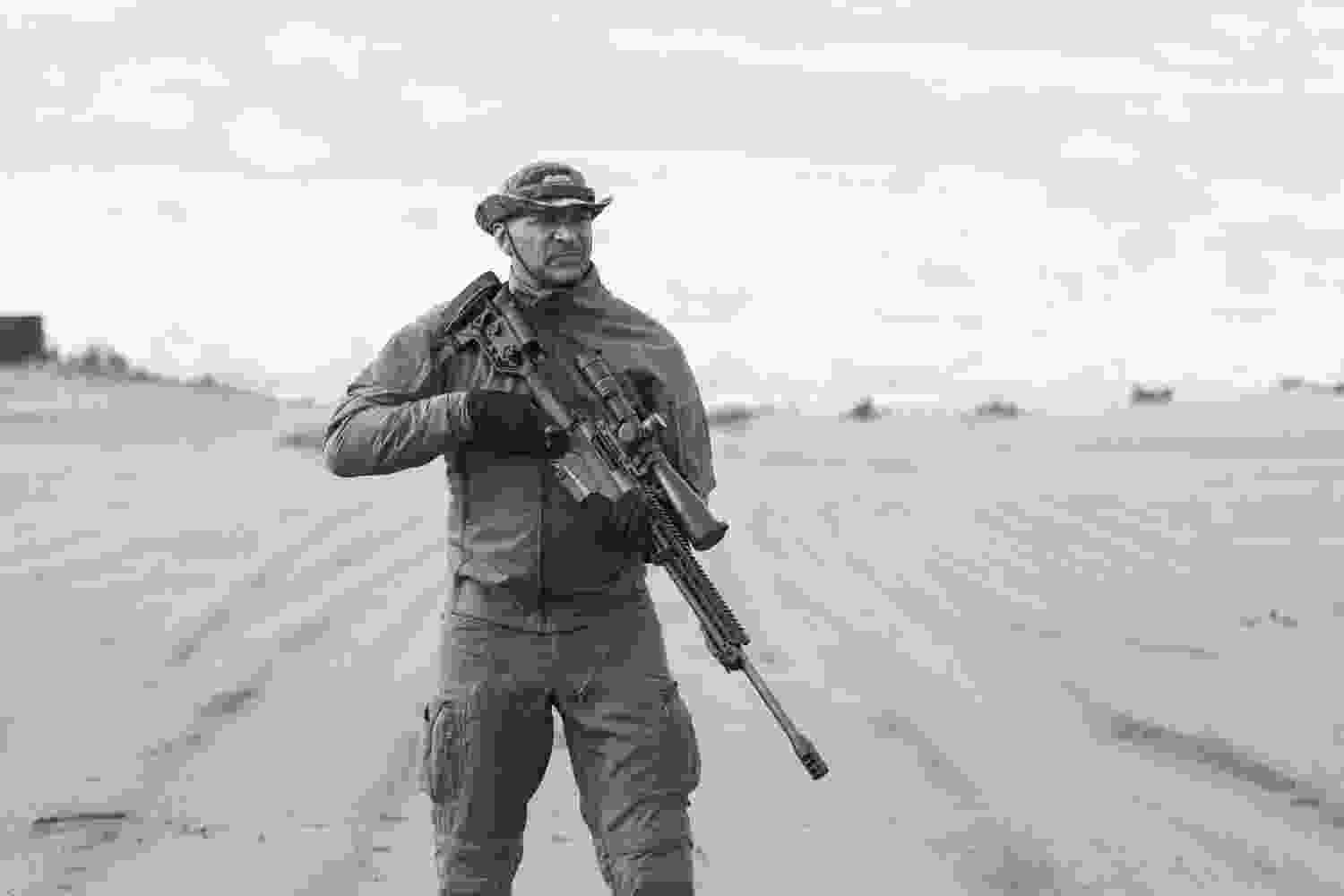
Coriolis effect is a phenomenon that must be corrected in extended ELR / ULR distances.
Coriolis correction is needed with long flight time of the bullet, hence the amount of correction required for different calibers is different even if the range remains the same. With artillery weapons, the principle and potential effect of phenomenon to trajectory was understood very early on. French mathematician Gustave Coriolis (b. 1792) suspected rotation of the Earth to be causing unknown horizontal shift of artillery projectiles. At the maximum distances, fired then with about 10s flight times, practical accuracy of the available guns was most likely not good enough to even see systematic 2m Coriolis shift reliably. But the name “Coriolis” still lived on.
The root cause of this shift is the rapidly rotating Earth, at the equator with a surface speed of about 450 meters per second or about 1500 ft/s. When a bullet leaves the barrel and flies long time before reaching its target, the target is no longer in the same place.
The shift of impact point can be horizontal, vertical or both, depending on the location and direction of fire. Horizontal correction is made in opposite directions in the northern and southern hemispheres. In the northern hemisphere, the bullet always curves to the right relatively to target, correction is made to the left- regardless of the direction of fire. In southern hemisphere, both effect and correction directions are reversed. Horizontal impact point error depends on location latitude: it is biggest at the North Pole, while at the Equator impact shift does not exist. Vertical impact shift is zero when shooting directly north or south.
The exact correction can be calculated with advanced apps. Calculation compensates automatically required correction in firing solution, based on latitude and target bearing relatively to firing point. Information for both is directly available from any smartphone onboard sensors.
In practice, the effect to impact shift is typically small at reasonable shooting distances, under 500m or even 1000m. In the Nordic countries, the error is usually corrected only laterally with simple memorized rule. One rule of thumb, also used by myself, is to add to one Coriolis correction 0.1mrad turret click to each 4 spindrift correction clicks. (Correction direction is to left with both). With typical 308 Winchester rifle at 1,000m range, this would mean Coriolis correction of less than half sight click. The isolated amount at 1000m is therefore too small to set on sight turret.
Author: Jarno Lankila
For some, sport shooting is a hobby, for others a profession, and then there’s group of people for whom sport shooting is much more than that. Jarno is a sniper / sniper instructor, but his detailed bio will remain confidential. We have the privilege to have him as one of our guest authors
